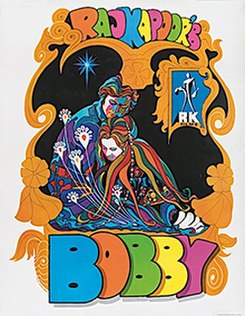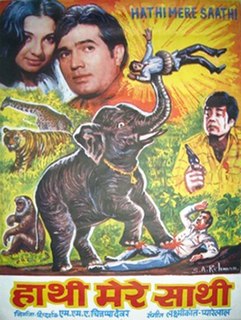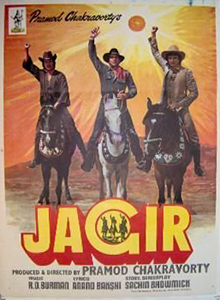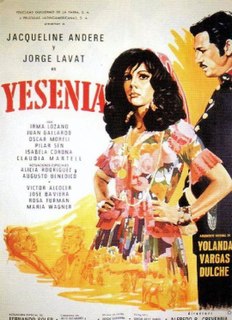Here are the films of the USSR with the greatest number of ticket sales during the year in question. [1] [2] Note that, in line with the definition above, this list does not include many Soviet TV series and other TV movies, which were not shown in cinemas of the USSR.

Film, also called movie or motion picture, is a medium used to simulate experiences that communicate ideas, stories, perceptions, feelings, beauty or atmosphere by the means of recorded or programmed moving images along with other sensory stimulations. The word "cinema", short for cinematography, is often used to refer to filmmaking and the film industry, and to the art form that is the result of it.

The Soviet Union, officially the Union of Soviet Socialist Republics (USSR), was a Marxist-Leninist sovereign state in Eurasia that existed from 1922 to 1991. Nominally a union of multiple national Soviet republics, its government and economy were highly centralized. The country was a one-party state, governed by the Communist Party with Moscow as its capital in its largest republic, the Russian Soviet Federative Socialist Republic. Other major urban centres were Leningrad, Kiev, Minsk, Tashkent, Alma-Ata, and Novosibirsk. It spanned over 10,000 kilometres (6,200 mi) east to west across 11 time zones, and over 7,200 kilometres (4,500 mi) north to south. It had five climate zones: tundra, taiga, steppes, desert and mountains.

A movie theater, cinema, or cinema hall, also known as a picture house, the pictures, or the movies is a building that contains auditoria for viewing films for entertainment. Most, but not all, theaters are commercial operations catering to the general public, who attend by purchasing a ticket. Some movie theaters, however, are operated by non-profit organizations or societies that charge members a membership fee to view films.
Contents
Accordingly, the list includes sales during each year only, which often means that the total number of tickets sold was even bigger. As an example, according to the list below the film The Red Snowball Tree , the top seller of the year 1974, sold 62.5 million tickets during that year. But the total number of sold tickets during all years was in fact 140 million. [3] This figure is comparable to some of the United States' all-time highest ticket sellers, such as The Sound of Music , E.T. the Extra-Terrestrial , and Titanic , in fact exceeding the latter's estimated ticket sales of 135.5 million. [4] Similarly, Amphibian Man (1962) drew up to 100 million admissions including re-runs. [5]

The Red Snowball Tree is a 1974 Soviet drama film directed by Vasily Shukshin. It was the most successful film of that year. In total, the film sold an estimated 140 million tickets at the Soviet box office, making it the highest-grossing Soviet film of all time. German film director and screenwriter Rainer Werner Fassbinder included The Red Snowball Tree in the top ten of his favorite films.
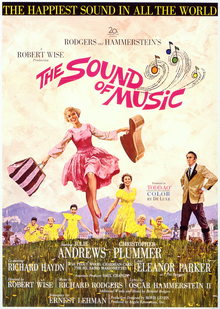
The Sound of Music is a 1965 American musical drama film produced and directed by Robert Wise, and starring Julie Andrews and Christopher Plummer, with Richard Haydn and Eleanor Parker. The film is an adaptation of the 1959 stage musical of the same name, composed by Richard Rodgers with lyrics by Oscar Hammerstein II. The film's screenplay was written by Ernest Lehman, adapted from the stage musical's book by Lindsay and Crouse. Based on the memoir The Story of the Trapp Family Singers by Maria von Trapp, the film is about a young Austrian postulant in Salzburg, Austria, in 1938 who is sent to the villa of a retired naval officer and widower to be governess to his seven children. After bringing love and music into the lives of the family, she marries the officer and together with the children find a way to survive the loss of their homeland to the Nazis.
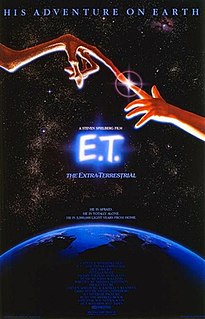
E.T. the Extra-Terrestrial is a 1982 American science fiction film produced and directed by Steven Spielberg, and written by Melissa Mathison. It features special effects by Carlo Rambaldi and Dennis Muren, and stars Henry Thomas, Dee Wallace, Peter Coyote, Robert MacNaughton, Drew Barrymore, and Pat Welsh. It tells the story of Elliott (Thomas), a boy who befriends an extraterrestrial, dubbed "E.T.", who is stranded on Earth. Elliott and his siblings help E.T. return to his home planet, while attempting to keep him hidden from the government.
In the mid-1960s, the Soviet Union sold 4 billion tickets and grossed 1 billion руб annually. [6] At the 1960s exchange rate of 0.9 руб per US dollar, [7] this was $1.11 billion (equivalent to $9 billion adjusted for inflation). Soviet ticket prices were generally lower than American ticket prices, due to lower living costs in the Soviet Union, [8] with average ticket prices ranging from 25 kopecks in the mid-1960s [6] to 50 kopecks in the early 1980s. [8]
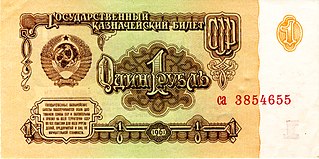
The Soviet ruble was the currency of the Union of Soviet Socialist Republics (USSR). One ruble was divided into 100 kopeks. Many of the ruble designs were created by Ivan Dubasov. The production of Soviet rubles was the responsibility of the Federal State Unitary Enterprise, or Goznak, which was in charge of the printing of and materials production for banknotes and the minting of coins in Moscow and Leningrad. In addition to regular currency, some other currency units were used, such as several forms of convertible ruble, transferable ruble, clearing ruble, Vneshtorgbank cheque, etc.; also, several forms of virtual rubles were used for inter-enterprise accounting and international settlement in the Comecon zone. In 1991, after the breakup of the USSR, the Soviet ruble continued to be used in the post-Soviet states, forming a "ruble zone", until it was replaced with the Russian ruble by 1993.
Both domestic Soviet films and foreign films were shown, the latter having a limited quota and thus drawing higher average ticket sales than domestic productions. [9] [6] Indian films had the strongest presence in the foreign blockbuster charts for four decades, followed by American films. [10] [9] Foreign imports included 300 Indian films [11] (most of which were Bollywood films), 41 American films (Hollywood), and 38 French films. [9] [6]
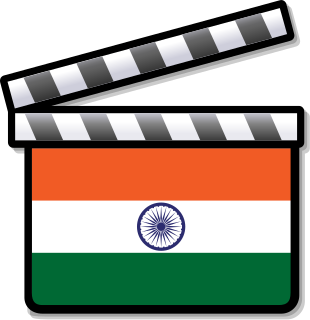
Hindi cinema, often known as Bollywood and formerly as Bombay cinema, is the Indian Hindi-language film industry based in Mumbai. The term is a portmanteau of "Bombay" and "Hollywood". The industry is related to Tamil film industry (Kollywood), Telugu film industry (Tollywood) and other industries, making up Indian Cinema – the world's largest.

The cinema of the United States, often metonymously referred to as Hollywood, has had a large effect on the film industry in general since the early 20th century. The dominant style of American cinema is classical Hollywood cinema, which developed from 1917 to 1960 and characterizes most films made there to this day. While Frenchmen Auguste and Louis Lumière are generally credited with the birth of modern cinema, American cinema soon came to be a dominant force in the industry as it emerged. It produces the total largest number of films of any single-language national cinema, with more than 700 English-language films released on average every year. While the national cinemas of the United Kingdom (299), Canada (206), Australia, and New Zealand also produce films in the same language, they are not considered part of the Hollywood system. Hollywood has also been considered a transnational cinema. Classical Hollywood produced multiple language versions of some titles, often in Spanish or French. Contemporary Hollywood offshores production to Canada, Australia, and New Zealand.
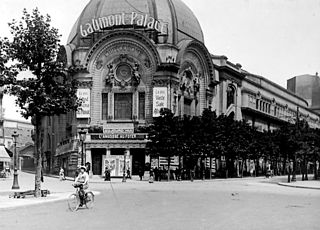
Cinema of France refers to the film industry based in France. The French cinema comprises the art of film and creative movies made within the nation of France or by French filmmakers abroad.



